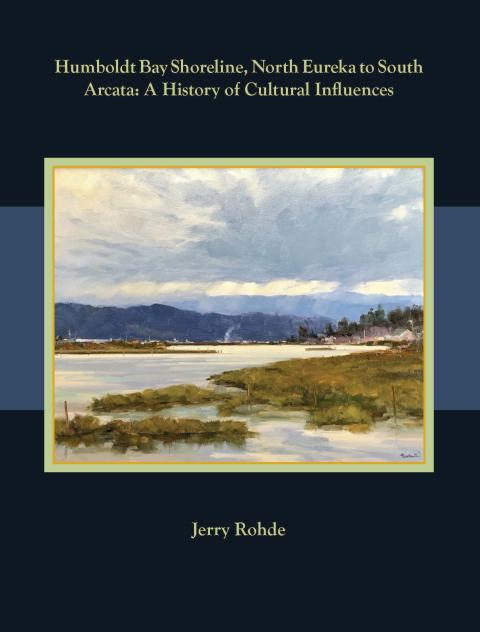Humboldt Bay Shoreline, North Eureka to South Arcata: A History of Cultural Influences
Jerry Rohde
Description
In 1850 the area east of Arcata Bay was a tapestry of wetlands and sloughs, fringed by conifer-clad hillsides. Canoe channels and trails connected a string of Wiyot villages that nearly encircled the bay.
Then white settlers arrived, establishing towns at Eureka and Union (Arcata). With them came profound changes in the landscape. Rock quarries. Log drives. “Reclaimed” ranchland. An airport. Four and a half railroads. In 170 years the area was transformed into a web of structures and infrastructures that connected what became the two largest cities in Humboldt County.
Recently a new period of change has begun, promising far greater effects. Global warming has created sea level rise, and Humboldt Bay will be the most severely affected area on the California coast. In response, elected officials, agency experts, and the general public need to make informed decisions about how to deal with the resultant rising water levels. We need to recognize that preparing for the bay’s future requires gaining knowledge of the bay’s past. This book will help start that process.
ISBN
978-1-947112-49-0
Publication Date
2021
Publisher
Humboldt State University Press
City
Arcata
Disciplines
Environmental Studies | Nature and Society Relations | United States History
Recommended Citation
Rohde, Jerry. Humboldt Bay Shoreline, North Eureka to South Arcata: A History of Cultural Influences. Humboldt State University Press, 2021. https://digitalcommons.humboldt.edu/monographs/10.
Creative Commons License
This work is licensed under a Creative Commons Attribution-NonCommercial-No Derivative Works 4.0 International License.
